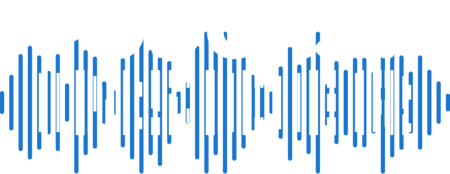 A quick look at Podcast Statistics 2017. Here at Blubrry, we take statistics seriously and devote a large portion of our time and resources to tracking the trends that affect you as a podcaster. As of May 2017 we measured over 50,000 podcast programs. Our statistics have the largest reach in the industry, with a portfolio ranging from amateur podcasters to enterprise clients including ESPN and ABC radio.
A quick look at Podcast Statistics 2017. Here at Blubrry, we take statistics seriously and devote a large portion of our time and resources to tracking the trends that affect you as a podcaster. As of May 2017 we measured over 50,000 podcast programs. Our statistics have the largest reach in the industry, with a portfolio ranging from amateur podcasters to enterprise clients including ESPN and ABC radio.
When it comes to predicting which platforms will continue to see growth and which will slip, we’re pretty well-positioned to make a very-educated guess. So where do we fall on the question of whether Apple will continue to dominate the podcast market? To put it simply, we anticipate that the tables will slowly turn, with Android gaining ground faster in global podcast consumption.
Apple Vs. Android: Which Will Dominate Podcasting?
“We predict the Apple’s direct market share – not third-party iOS apps – will fall below 50% by midyear 2018, as podcasting continues to become popular on Android,” says Angelo Mandato, CIO of Blubrry.
Mandato’s educated opinion is based on two basic facts:
- We’ve seen Android podcast consumption nearly double over the past two years.
- We don’t see Apple’s additional tags to podcast feeds giving them an edge and changing podcast consumption. It’s great to see innovation from Apple, but unless Apple creates an Android podcast app, the trends we see will continue their market share decline.
Following are the numbers we have documented that illustrate this shift:
Apple’s iOS Podcast App/iTunes Desktop market share:
- May 2017: 55.5%
- May 2016: 59.7%
- May 2015: 64.8%
- May 2014: 68.6%
- May 2013: 68.7%
- May 2012: 73.1%
- May 2008: 73.8%
- May 2007: 96.5%
Why is this shift happening? While we at Blubrry can’t make any definitive claims, Mandato offers this in-depth look at the trends and technological developments that have informed consumer behavior, as they may serve to act as a narrative explaining Apple’s slow, but steady, slippage:
May 2008 – Early podcast consumption required syncing between a computer and a mobile device.
At that time the Zune App showed great promise with 6.6% market share. The following year, Zune reached over 10% market share of podcast consumption, a level no other app since (other than Apple’s) has achieved. 2008 is an important year, as it was the last year that there were no mobile apps for podcasting.
In 2008, Apple’s desktop market share was 73.8%. It would prove to hold steady between 70 and 80% for the next 5+ years. There were no mobile apps at this time for iOS, Android launched fall of 2008 and the first podcast mobile app for Android appeared in 2009. Desktop browsers made up 5.8% market share. Browsers did not have built-in media players at this time, so podcasters were required to use Flash-based players.
In 2008, a desktop app called Juice (previously called iPodder) spearheaded by Adam Curry, the “podfather” of podcasting, still enjoyed nearly 3% market share.
May, 2012 – A pivotal year in which apps on mobile devices started to dominate the market
2012 was the year we saw podcast consumption shift from desktop computers synced to mp3 players, to apps directly on mobile devices – as well as the start of Android podcast consumption providing meaningful data. We saw modest growth in desktop web browser consumption thanks to HTML5-based built-in browser players becoming the norm. The Podcast iOS app launched only one month later, which quickly displaced more than half of the podcast consumption from iTunes desktop directly to the iPhone in only a few short months.
In 2012, Apple devices dominated the market with nearly 75% market share of podcast consumption.The combined Apple app market share was 73.1% who used either the iOS iTunes app (36.2%) or iTunes Desktop (36.9%). (Before the iOS podcast app launched in 2012, podcast consumption on the iPhone was done directly within the mobile iTunes app.) Apple’s third-party iOS app market share was 1.5%, which included Downcast (0.6%) and others.
Contrast that to Android, which enjoyed an app market share of only 4.7%, primarily including the default media player on Android as well as apps such as BeyondPod and Google Listen (a now-defunct Android podcast app that used Google Reader: both met their demise the following year).
We watched Android consumption stagnate from 2012-2015, due to the lack of a standard way to subscribe to podcasts on Android. And the Zune App, which worked with the Zune media player at the time, had a quickly-shrinking 1% market share.
May, 2017 – Modern podcast consumption
In the ensuing five years, the picture has changed fairly dramatically. At this time, Apple has just 55.5% of the app market share, split between the iOS podcast app (51.1%) and iTunes Desktop (4.4%). Apple 3rd party market share is currently 7.7%, which includes 3rd party iOS apps such as Stitcher radio (1.8%) and Overcast (2%) for iOS.
But while Apple devices still dominated the market as of last month, with over 63.2% combined market share of podcast consumption, Android apps have slowly and surely intruded on Apple’s once seemingly-unshakeable market share, boasting 17.8% market share in May 2017 including apps such as Stitcher radio (1.7%) and many more.
There are over 12 Android podcast apps that support the subscribe on Android protocol (http://subscribeonandroid.com/), which lists the majority of the Android apps used today. As of last month, desktop browsers made up just 12.6% market share, which included Chrome (10.2%), IE/Edge (1.1%), Firefox (1.0%) and Safari (0.3%).
Whether our predicted date for the eventual tipping point is accurate or not, the numbers definitely indicate that a change is coming. Which presents a big question for podcasters: if you knew Apple no longer owned podcasts, how would it change the way you produce and promote your show?





